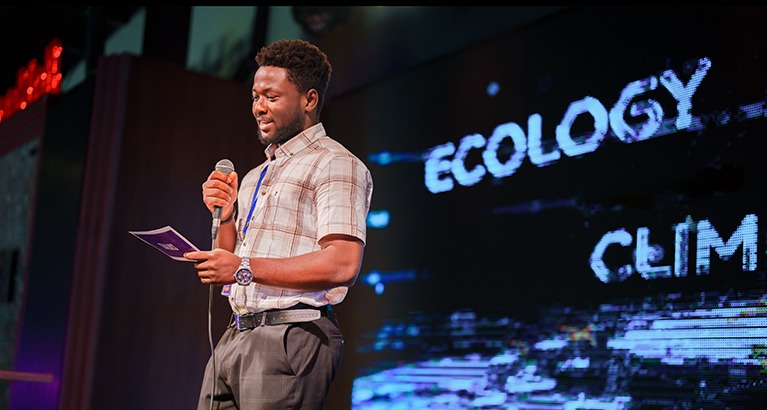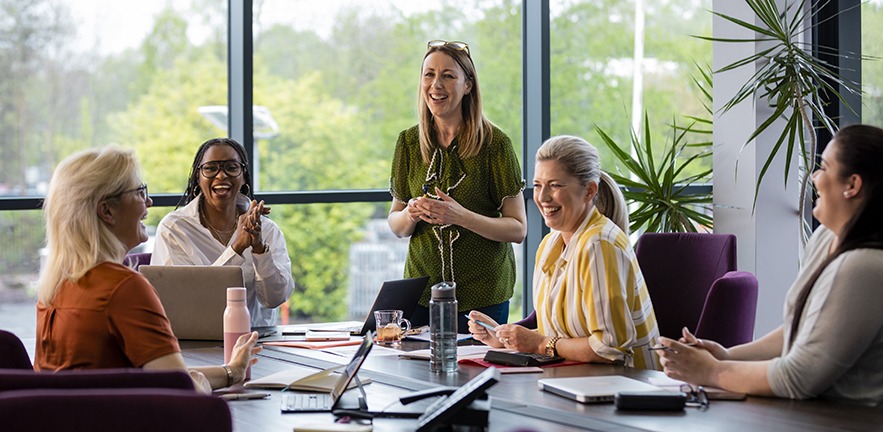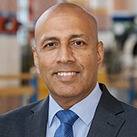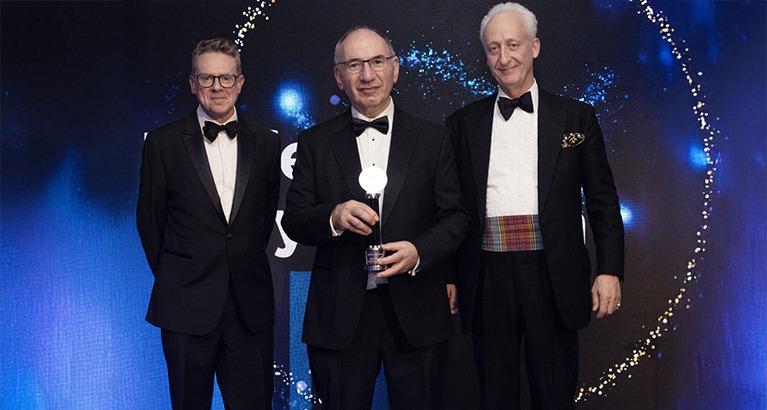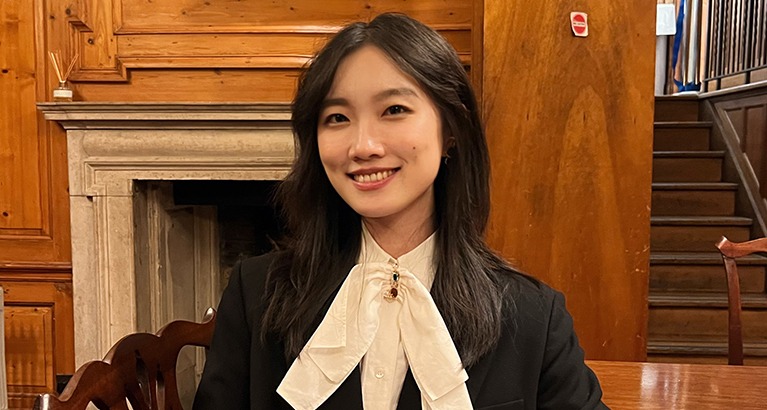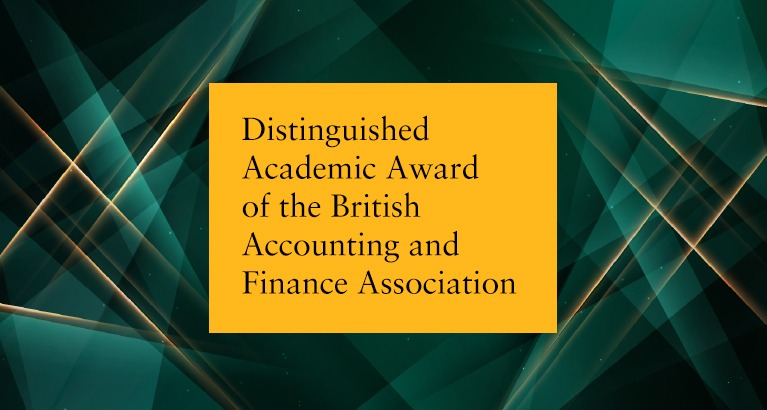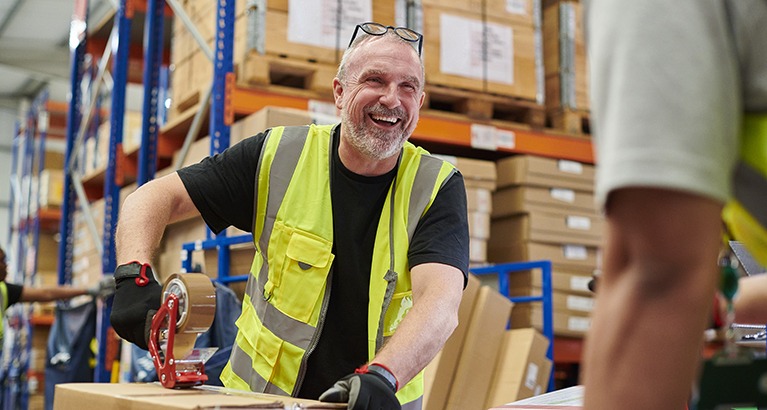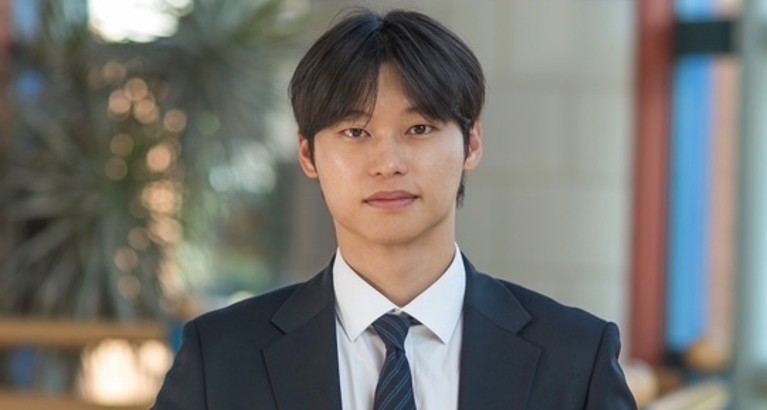Add your feed to SetSticker.com! Promote your sites and attract more customers. It costs only 100 EUROS per YEAR.
Pleasant surprises on every page! Discover new articles, displayed randomly throughout the site. Interesting content, always a click away
How corporate social responsibility and competition interact 15 Apr 2025, 8:55 am
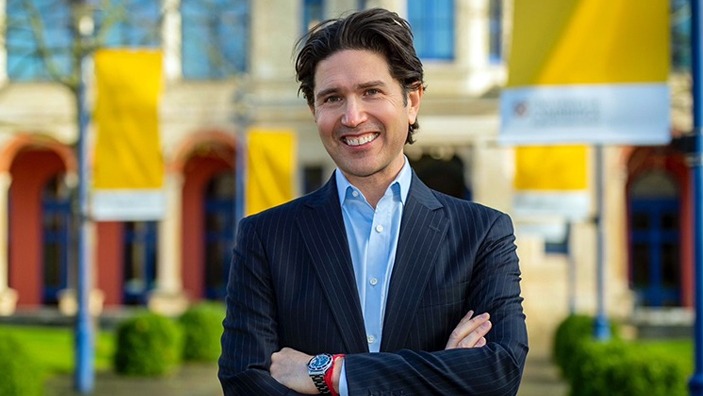
With the second Donald Trump administration rolling back both diversity, equity and inclusion (DEI) and climate policies in the US, and many big companies falling into line, what is likely to be the broader trend in the 2020s and beyond for corporate social responsibility (CSR) in the US and globally?
And what effect will the reactions of various stakeholders – government, investment markets and the media – have on these CSR trends?
Research by Christopher Marquis, Sinyi Professor of Chinese Management at Cambridge Judge Business School, sheds some light on this topic through a granular examination of the effect of stakeholders on companies’ CSR efforts.
Looking beyond financial metrics to assess corporate responsibility trends
“There must be thousands of studies on how CSR affects the financial performance of companies, and the results have been inconsistent. And the fact that there are thousands of studies tells me something is not quite right with the literature and its obsession with attempting to justifying everything financially. That the same general topic keeps being studied again and again also raises questions about the motivation of many of the researchers,” says Christopher.
“So in my work on the topic, I have tried to examine what leads to more or less CSR (or sustainability), which can then help understand what future trends may be.”
Rather than treating stakeholders as just one entity, Christopher’s research instead examines the different assessments of various stakeholder groups, and conflicting interests within those groups, to identify how different types of stakeholders view CSR.
And while it’s difficult to predict what may happen during the 4 years of Trump’s second term and beyond, Christopher has some broad observations about how CSR trends may play out over time.
in my work on the topic, I have tried to examine what leads to more or less CSR (or sustainability), which can then help understand what future trends may be.
Dormant but resilient: the enduring commitment to corporate social responsibility
“You have seen that a lot of companies have backtracked in their prior commitments, so I think that there will be pullback over the next few years on CSR commitment and initiatives,” he says. “But I have seen in my research over 20 years now that there is a deep well of interest in social responsibility – be it climate or diversity or other areas – and this interest is widespread across a large number of constituencies.
“So in the short term there will be less pressure for CSR, but I think there’s a depth of commitment to these topics – so it may be dormant or in hibernation, but I think these initiatives will come back, and hopefully before 4 years.”
On the topic of organisational dormancy during times of political change, Christopher points to a study by a former student of his, Rajiv Krishnan Kozhikode, who now teaches at Simon Fraser University in Canada. The study published in the journal Organization Science outlines how policies are often later reversed through “predictable political cycles”.
Focusing on branch expansion of commercial banks in India, the research finds that some organisations strategically adopt a temporary reduction in certain activities in response to a detrimental public policy, and “maintain this inactivity until a favourable public policy returns” – which often rewards this step-back-for-now strategy.
“Organisational dormancy is a viable response to detrimental policy changes that are perceived to be potentially temporary,” says the bank research, which challenges assumptions that corporate public policy changes related to politics are enduring.
While that study focused on bank expansion, Christopher says the findings resonate with his research on CSR and is what he predicts will happen following Trump’s tenure. He notes that this is not an “invitation to not do anything for the next 4 years” and that it is important for individuals and stakeholders “to keep pressure on companies to act in the public interest.”
in the short term there will be less pressure for CSR, but I think there’s a depth of commitment to these topics – so it may be dormant or in hibernation, but I think these initiatives will come back, and hopefully before 4 years.
Tension and trade-off between benefits and costs of corporate social responsibility
Broadly, companies facing pressure from competitive conditions aim to sustain their advantage through one of 2 strategies: lowering prices through cost control and exploiting economies of scale, or product differentiation to create unique customer value that builds loyalty that can command premium prices.
The same tension and trade-off between benefits and costs exists with CSR: firms can devote greater focus and resources to diversity, sustainability and other CSR goals to differentiate themselves from rivals, or reduce CSR activities such as diversity recruiting initiatives to save costs.
The study focuses on 1,677 privately controlled Chinese companies listed on the Shanghai or Shenzhen stock exchanges from 2008 to 2017. CSR ratings were compiled from rating agency Runling, also known by the English acronym RKS, which created a 70-indicator rating system to examine the CSR behaviour outlined in the firms’ CSR reports.
Christopher believes that the findings, published in the Journal of Business Ethics, are broadly generalisable to other markets where competition exists.
How competitive advantage reflects stakeholder attention to corporate social responsibility
“While prior studies have explored the impact of corporate attention to stakeholders on firms’ decision-making, they have overlooked the role of stakeholder attention” – and such attention is critical to how firms deal with the trade-off between the benefits and costs of CSR activities.
Put simply, “competitive advantage from CSR differentiation is contingent on the level of firm attention by stakeholders who reward CSR”, says the research, which develops a new framework based on the argument that companies contemplating CSR consider the trade-off between the benefits and costs of different possible programs.
“Existing studies have mainly focused on the role of corporate characteristics such as product features, consumer diversity and firm-level strategy, while ignoring the features of external stakeholders,” says the study. Further, much previous CSR research has examined non-shareholder stakeholders as a combined entity – “assuming that customers, suppliers, employees, the community, governments and other stakeholders share a similar utility function”, while Christopher’s research focuses on “the extent to which stakeholders’ utility functions may vary.”
This is important, says Christopher, because while there has been a lot of discussion about whether people care about CSR, there has been little examination about variation between different constituencies – and such nuances matter.
Competitive advantage from CSR differentiation is contingent on the level of firm attention by stakeholders who reward CSR.
The attentional roles of governments, investors and media on CSR
Specifically, the research explores attention toward CSR from 3 different types of stakeholders: government, investment markets and media.
Government is a particularly relevant stakeholder in China. The study finds that the positive effect of political market competition on CSR behaviour is stronger for firms in sectors that receive greater central government attention, and weaker for firms in industries that receive greater local government attention – which reflects the ”hierarchical and relatively autonomous relationship between the central government and lower-level governments such as a province or city.”
Regarding investment market attention, the research finds greater positive effect of political market competition on CSR behaviour for firms that receive greater attention from investment market stakeholders, and this is stronger when the attention is from such stakeholders who more appreciative of CSR such as long-term institutional investors and female financial analysts.
There have been several previous studies that find that females tend to be more concerned about companies’ CSR behaviour. These include an earlier study by Christopher, in Strategic Management Journal, which found that female directors of companies are more likely to engage in philanthropic activities, which are often related to CSR-focused issues.
As for media attention, the research finds that the positive effect of political market competition on CSR behaviour is stronger for companies that receive greater media attention, suggesting an opportunity for firms with media attention to attract public support through CSR behaviour.
The research includes data based on articles in eight mainstream financial newspapers commonly used in academic research on China: China Securities Journal, Shanghai Securities News, China Business News, 21st Century Business Herald, China Business Journal, Economic Observer, Securities Daily, and Securities Times.
Disinformation and the challenge of stakeholder attention in the digital age
Christopher’s research also focuses on disinformation, the subject of the second Cambridge Disinformation Summit in April 2025, pointing out that stakeholders’ attention is limited and can be manipulated.
“In the digital era, both managers and stakeholders should be attentive to the role of information intermediaries in the transmission of information concerning ethical issues, such as information intermediaries’ motivations and orientations,” the study says.
Featured research
Wang, Y., and Marquis, C. (2025) “Does product market competition promote or reduce firms’ corporate social responsibility behavior? How stakeholder attention shapes responsiveness to stakeholders” Journal of Business Ethics.
Teece, D. J. (2007) “Explicating dynamic capabilities: The nature and microfoundations of (sustainable) enterprise performance” Strategic Management Journal.
Shore, J., Bernstein, E., and Lazer, D. (2015) “Facts and figuring: An experimental investigation of network structure and performance in information and solution spaces” Organization Science.
Mainemelis, C., Kark, R., and Epitropaki, O. (2015) “Creative leadership: A multi-context conceptualization” Academy of Management Annals
Related content
The 2025 Cambridge Disinformation Summit brings together global thought leaders to explore research on the effectiveness of strategies to address the harms caused by disinformation.
Related articles
Social impact
Exploring the rise of the global B Corp movement
The B Corp movement is helping to shift the focus of capitalism from shareholders to all stakeholders: find out how Cambridge fits in.
During the past few decades, corporate social responsibility (CSR) issues have attracted enormous attention from regulators and the investment community around the world. Until now, the most widely adopted measure is CSR-related reporting, which is believed to be a critical ingredient in achieving broader CSR goals.
In this webinar, jointly hosted with the Tharawat Family Business Forum, we explored the difference and overlaps between corporate and private giving.
The post How corporate social responsibility and competition interact appeared first on Cambridge Judge Business School.
Step into AI-driven business and leadership learning 10 Apr 2025, 4:50 pm
For us as business leadership educators, the challenge is 2-fold: how do we not only use the powers of AI in our education and teaching, but also how do we train future leaders to think critically about the transformative technology we will all come to rely on?
At Cambridge Judge, AI is being explored across multiple dimensions:
- teaching innovations including AI simulations and embedded tools to enable hands-on, interactive learning
- research which applies AI to practical matters such as branding, mentoring and decision-making
- student-led experimentation with new tools, platforms and formats
Cambridge Judge is engaging with AI not as a standalone topic, but as a technology that is woven into the fabric of our thinking about leadership, research and education.
AI demand from students drives enthusiasm across the Business School
As an era-defining innovation, AI is obviously sparking demand from our students for these initiatives. Floris Eland, a Cambridge MBA student from the Netherlands (MBA 2024), had deep experience in AI in his career as a consultant for large Dutch companies, and is now co-chair of the AI Student Interest Group at Cambridge Judge.
“I learned from my time as a consultant that AI is a tool, not an end in itself,” says Floris. “Organisations using AI need to ask ‘what is the goal, and what is the benefit it will have?’ It makes no sense to chase AI only because it is hot.
“In my studies at Cambridge Judge I’m thinking about how companies can position themselves with the right data to use AI in a way that gives them a competitive advantage,” says Floris.
This enthusiasm is met with equal commitment from our faculty and leadership.
“Cambridge Judge is engaging with AI not as a standalone topic, but as a technology that is woven into the fabric of our thinking about leadership, research and education,” says Professor Gishan Dissanaike, Dean of the Business School.
I learned from my time as a consultant that AI is a tool, not an end in itself. Organisations using AI need to ask ‘what is the goal, and what is the benefit it will have?’ It makes no sense to chase AI only because it is hot.
How are Cambridge Judge faculty bringing AI to life in the classroom?
In our classrooms, AI is not just a case study or discussion topic, it’s an opportunity for collaborative, team learning. Our academics are using it to engage students through interactive case studies, competitions and customised tools.
Students in Chris Coleridge’s MBA core class on Strategy take part in a tournament in which teams represent leading AI-involved companies including OpenAI, Anthropic, Google/Gemini, x.ai, Mistral and Meta.
They are tasked with developing a strategy for their firm, which was recently presented to a panel of expert professionals who visited to offer real-world insights.
“It’s an engaging competition that’s proved to be a lot of fun for students,” says Chris, Management Practice Associate Professor. “The idea is to help students apply their Strategy learning to thinking about how major firms, like the key players in AI, can develop competitive advantage. Some of the firms around at the birth of microcomputing are now the most powerful the world has ever seen, so will the new Gen AI-focused businesses be able to disrupt these giants and develop their own business empires?”
Cambridge Judge students in some Master of Finance (MFin) and Executive Master of Accounting classes have the opportunity to use bespoke AI tools designed using ChatGPT by their lecturer, Professor of Economics Paul Kattuman.
The Executive Master of Accounting’s Statistics ‘AI tutor’ is a learning assistant focused on data analysis issues in finance and accounting. The tutor supports students in mastering and applying concepts and methods to address analytical challenges they face in real-world scenarios. For instance: does implementing new invoicing software increase efficiency by reducing processing times across departments? The AI tutor helps students to formulate this as a testable hypothesis and guides them through concepts such as sampling distributions, confidence intervals and P-values, which all relate to probability.
Step-by-step guidance on interpreting results enables data-driven decisions on their organisations’ operational practices. Another practical example looks at what determines audit fees charged? Here, the AI tutor guides students through exploring data, constructing regression models, evaluating model reliability, performing hypothesis tests on relationships, and creating visualisations to clearly communicate findings – all with interactive use of statistical software. Whether it’s pricing strategies, profitability analyses or identifying operational inefficiencies, the AI tutor equips students with knowledge and confidence.
“These bespoke tools illustrate in a very clear way how AI can be used to illustrate rewarding but challenging data analysis concepts that can be applied to disciplines such as finance and accounting,” says Paul. “They have proved popular with students, and I have enjoyed using them in teaching.”
The idea is to help students apply their Strategy learning to thinking about how major firms, like the key players in AI, can develop competitive advantage. Some of the firms around at the birth of microcomputing are now the most powerful the world has ever seen, so will the new Gen AI-focused businesses be able to disrupt these giants and develop their own business empires?
How has AI improved case study learning?
Our students and faculty are also innovating in partnership on new AI-based tools. An AI-enabled case study with character interaction has been developed by Dr Anyu Gao, a fellow and Executive MBA graduate (EMBA 2022) of Cambridge Judge, and Stelios Kavadias, Margaret Thatcher Professor of Enterprise Studies in Innovation and Growth, and is being used as material in various courses.
“What we’re doing is personifying executives and senior managers from the case on paper into highly interactive characters. These characters were brought to life by AI that students can interact with, making the experience far more immersive,” says Anyu. “This isn’t just a tech upgrade – it’s about how students engage with material to enhance their learning outcomes, and how we re-think and scale teaching for traditional classes, as well as remote or individual learners.”
The case study focuses on a crucial issue facing companies and other types of organisations: which innovation projects to invest in that truly align with their strategic objectives, and which to not pursue. It’s a very complex problem in which organisations need to step back and consider multiple parameters.
“Delivering this in a dry, lecture-based way has limited effect,” says Stelios, adding that “even a standard case where you’re just given a snapshot of what happened in a company doesn’t feel sufficient. You need to live through the context: what it’s like to have different individuals with different perspectives coming together as a leadership team, trying to make a decision.”
Key to the AI case study’s success, he says, is an immersive and interactive environment in which students ask questions of chatbox characters who personify key executives in the case, which brings an exciting new level of interaction and engagement.
Stelios says the case study has shown that the teacher-student relationship is changing in this AI era. The teaching capacity “used to reside solely with the educator – the professor, the lecturer, the person on stage”, but the role of the educator as a content deliverer is now becoming “just one part of a more cross-functional, collaborative educational experience – a shift from the more traditional, single-speaker model of the past.”
You need to live through the context: what it’s like to have different individuals with different perspectives coming together as a leadership team, trying to make a decision.
What are Cambridge Judge PhD students discovering with AI?
Cambridge Judge faculty research on AI and LLMs has ranged from papers on decision-making to creativity to corporate strategy in the automobile sector, which were explored in a previous article in this series. The next generation of academics, our PhD students, are also powering into this topic, applying cutting-edge techniques and showing new possibilities for how AI can be applied in business and society.
Applying AI to football – and beyond
Football and AI may not be the most obvious partnership, but research by PhD candidate Liang Zhao is using AI to put English Premier League mega-brand managers in the spotlight. The usual methods to evaluate managers, including win percentages, do not separate managerial ability from the team’s resources and other circumstances. So the research, done with Ahmed Khwaja, Professor of Marketing, Business and Public Enterprise, and applied to football clubs such as Liverpool and Manchester United, uses LLMs to quantify managerial ability with unstructured but publicly available data such as interviews and news articles, thus providing “direct and unbiased quantification of managerial abilities”. While the ongoing study focuses on football management, “the approach has potential in other fields such as talent evaluation, co-branding partnerships and corporate leadership,” say Liang and Ahmed.
Using AI to personalise recipes
Fellow PhD student at Cambridge Judge, Sonal Srivastana, is partnering with one of the leading meal-kit providers in the UK in applying reinforcement learning techniques to better personalise recipes for consumers. They are analysing household-level data to explore how people choose recipes, a hybrid approach which is a “step towards algorithms that are not just scalable, but also usable by decision-makers who need to trust what the models are doing,” says Sonal.
Advancing mentorship with AI
And to complete the set, Soniya Gupta-Rawal, Ahmed Khwaja and Jaideep Prabhu, Professor of Marketing, are trying to better match workplace mentors and mentees, using AI tools along with other methodologies such as interviews. The research, in collaboration with the Accelerate Cambridge incubator programme at the Business School’s Entrepreneurship Centre, uses AI-powered sentiment analysis on videos submitted by venture founders in their application and later Pitch and Judge events.
Their work gives insights into the “emotional and professional growth of entrepreneurs”, say the authors, “aiming to enhance the mentorship framework by identifying key success metrics, improving mentor-mentee pairings, and contributing to the development of evidence-based policies for supporting entrepreneurs.”
The innovative, broad and potentially impactful research of our early-career academics is an important aspect of the Business School’s commitment to contribute to AI scholarship and its real-world application – now and into the future.
How is AI impacting knowledge creation?
The elephant in the room in this discussion is: if knowledge creators are integrating AI technology into their research and output, is it producing good quality work? With high quality input, it can be very good, despite the lingering issue of ‘hallucinations’ (relevant but false information) – and that poses a quandary.
Because LLMs are so powerful, they can be manipulated to create articles or findings known as deep research fakes designed to trick or deceive researchers. Academic fraud is nothing new, but today’s scholars need to be doubly on guard to spot such deliberate deception.
Yet beyond such troublemaking, academia in the AI age faces a more existential issue: are highly trained scholars really special anymore? In the era before machine learning, elite scholarship was considered very scarce and time consuming, but if AI can rapidly produce journal-quality papers, such scarcity is diluted or even eliminated altogether.
“AI holds enormous potential for scholarship, and we don’t want to stifle this, but the potential democratisation of knowledge creation is an issue that academic journals and individual academics are increasingly thinking about,” says Matthew Grimes, Professor of Entrepreneurship and Sustainable Futures, who as an editor of the Academy of Management Journal co-wrote a recent essay about this for the journal.
These forces will be disruptive: AI isn’t just changing how research gets done – it’s making us question who we trust to do it, and what makes something truly original or meaningful, and worth sharing.
AI holds enormous potential for scholarship, and we don’t want to stifle this, but the potential democratisation of knowledge creation is an issue that academic journals and individual academics are increasingly thinking about.
Reimagining the role of business schools in the age of AI
Yet it is still early days for AI in the classroom as well as the workplace. At Cambridge Judge, we are committed to preparing future leaders not just how to use AI, but how to govern it so the technology best serves society. In doing so, the Business School is thinking hard about its role in shaping the future of work, learning and scholarship in the AI age.
“Adopting generative AI in educational efforts is sort of like introducing pulleys into weightlifting,” says Matthew “It can be an amazing tool for cheating, but also an incredibly powerful tool for learning and improving one’s skills.
“The adoption has been strong, ugly, and asymmetric – strong in its uptake, ugly in its unsanctioned and experimental use, and asymmetric in how unevenly it’s being used across students and faculty.”
As AI becomes commonplace in the way other time-saving tools have (think of the smartphone) over time, this asymmetry should dissipate. Yet whether AI use over time is ugly or beautiful may well be determined by how we teach its use, its governance and its ethics – and this is a challenge that Cambridge Judge welcomes.
Unlock your leadership potential
Unlock your potential with Cambridge Judge Business School’s dynamic programmes – tailored to equip you with leadership skills and innovative thinking to drive meaningful change in business and society.
Related articles
We should get used to the fact that our workplaces and interactions with government will change dramatically with the emergence of AI – but should we be concerned? Job losses, privacy infringements and rights erosion are growing themes in the media, but in this article we look beneath the hype and use the latest research from Cambridge Judge to explore the growing influence of AI and what the means for the future of human agency, potential and inclusion.
Artificial Intelligence (AI) has evolved beyond being just a tool for efficiency. It’s now a game-changer in how businesses approach innovation.
Companies and other organisations are rapidly adopting artificial intelligence to drive strategy and planning. But there’s a key question: does AI actually make better decisions than humans? Academics art Cambridge Judge Business School are using recent research to help answer this question.
The post Step into AI-driven business and leadership learning appeared first on Cambridge Judge Business School.
How AI is changing the way we work and how we’re governed 9 Apr 2025, 6:00 am
Progress around the world on these issues has been uneven as organisations and governments experiment with this era-defining technology.
But AI’s impact isn’t just technical, it’s also emotional, economic, and deeply human. In this article, we explore the topic from those different angles, reflecting on recent studies by Cambridge Judge Business School academics.
Will AI replace my job?
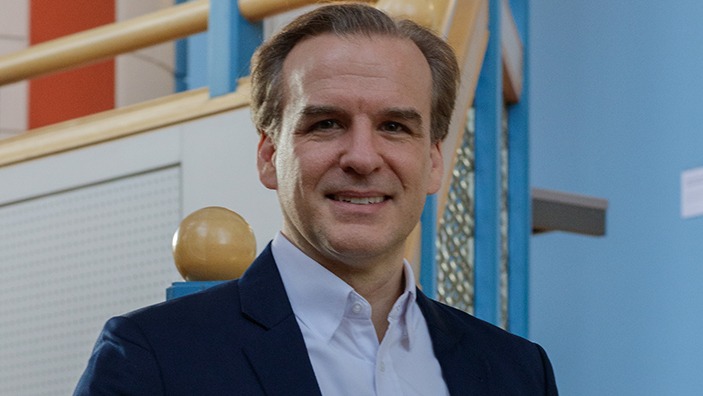
One common conversation about AI’s impact on work is often automation and job losses. But that view implies we have no control over the future, and can obscure the bigger picture. The important question now is about how we as humans choose to deploy the technology, and importantly, how humans and AI will work together. Seen through this lens, we can ask how the technology can enhance rather than replace human capabilities, helping us to learn and be more creative, and create a future of work which could be better.
We should remember that humans have always had the ability to “forge their own destiny at work rather than having it dictated by machines”, advises Jochen Menges, Professor of Leadership at Cambridge Judge and at the University of Zurich, whose work traces how the concept of the future of work has evolved over time, moving away from a focus on efficiency and automation and toward unlocking human potential.
In a special issue on the ‘The Human Side of the Future of Work’ paper in journal Academy of Management Discoveries, Jochen and co-authors look back to the industrial revolution, when concerns emerged about machinery enriching the privileged while leaving the poor behind.
The authors also cite a remark from President John F. Kennedy in 1962: if people have the talent to invent new machines that put people out of work, they also have the talent to put those people back to work.
“The future of work is subjective and can be shaped by people,” says Jochen’s essay. “Technologies affect the qualities we think of as part of humanity itself.”
As the study suggests, the future is not something we inherit from machines. “As for the future, your task is not to foresee it, but to enable it,” said French writer Antoine de Saint-Exupéry, author of ‘The Little Prince’, who is cited in Jochen’s study.
So when we ask if AI will replace our job, the answer may be: “if we ask it to”.
Harnessing AI to support human feedback
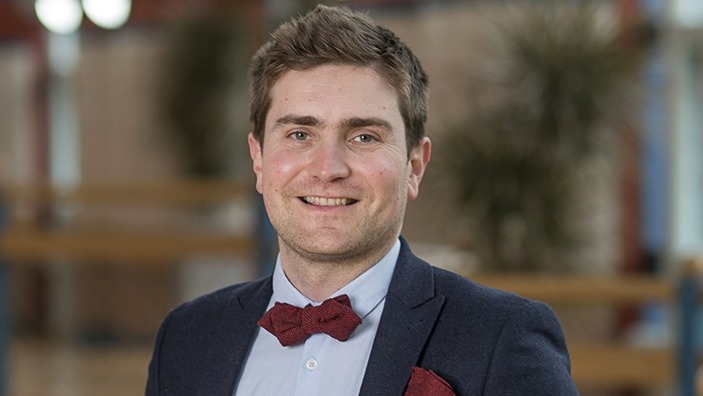
The belief in human agency and AI’s potential to support human strengths is supported by a different study, this time by Thomas Roulet, Professor of Organisational Sociology and Leadership at Cambridge Judge. Thomas has studied how technology – specifically machine feedback – can improve individual learning and amplify the effect of human feedback.
Machine-generated feedback was shown not only to improve performance directly, but also to enhance the impact of related feedback given by humans. In particular, this effect is even more acute when it comes to learning from failure: people were seen to pay closer attention to their mistakes, reflect more deeply, and become more motivated to act on feedback – especially when both machine and human feedback pointed to similar issues. It’s a clear example of how collaboration between humans and machines can enhance learning and support personal growth.
In these cases, trust in the machine programming was key – if people felt the algorithm was reliable and fair, it could improve learning in ways that possibly humans couldn’t achieve (because of human biases which can impact human-to-human-learning).
As AI systems become more embedded in workplaces, this new partnership between humans and AI to support employee development will only grow stronger, so organisations must work hard to apply the technology in ways that are transparent and fair, representing the diversity of humanity.
Where AI and capitalism collide
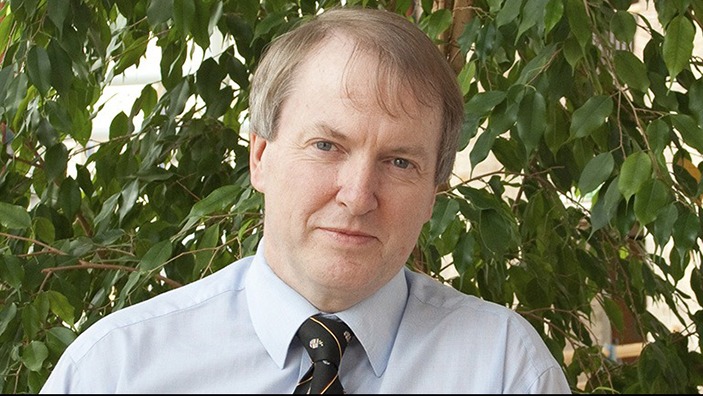
If human agency is key to shaping the future of AI, then it applies not just to how we design software and algorithms, but also how we define the economic systems determining how AI is developed, used and experienced.
In a recent study on AI and capitalism, Philip Stiles, Associate Professor in Corporate Governance at Cambridge Judge, argues that in a system prioritising efficiency, growth and shareholder returns, AI will be focused on pursuing those same rewards.
With those priorities comes a continuation of the stresses on humans – ‘techno-stress’ as the study terms it. Most of us have felt overloaded by having to work faster, adapt to new technology, being constantly on and reachable, or worrying that your skills won’t keep up with the pace of change.
But the study also points out that many workers – especially in the gig economy – are choosing to use AI-enabled platforms to work flexibly or boost their income.
“Rather than simply critiquing the technology, we must reflect on the social and economic systems in which it operates,” says the study.
So while we have choices in how to shape our AI-driven workplace in future, changing the wider economic systems we operate in is a much more difficult and potentially transformative undertaking.
How is AI impacting government work globally?
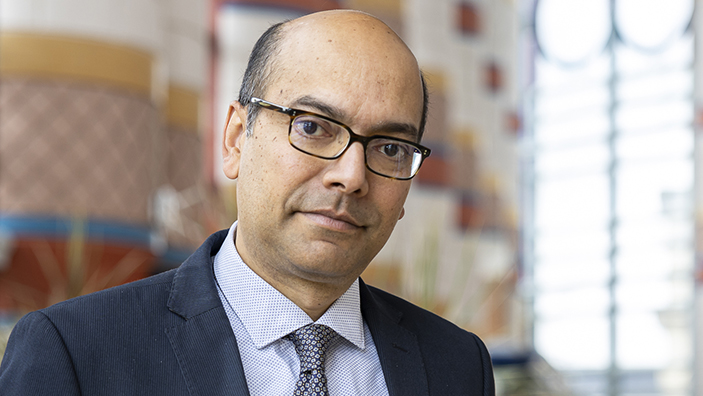
We now zoom out from the workplace to government and ask: how quickly and successfully are politicians around the world utilising the technology, and to what effect.
Most governments are expected to do more and do it better, but often with less money and rising debt burdens. To avoid unpopular measures to address this, such as tax rises or spending cuts, AI offers new hope, if used properly.
“Becoming more efficient and effective is an often-overlooked option for fiscally squeezed governments,” says Jaideep Prabhu, Professor of Marketing at Cambridge Judge, “and artificial intelligence coupled with frugal innovation practices can play a big part in this. It’s not an immediate fix, but could make a significant difference in the mid to long term.”
1
Estonia’s example: can e-systems save money?
Jaideep highlights Estonia as a stand-out example of using digital transformation to do more with less. In his recent book ‘How Should a Government Be?’ he discusses how the decision to allow citizens to do a whole host of administration online, such as voting, obtaining identities, and managing pensions, allow for better financial tracking and reducing errors, amongst other benefits.
Jaideep adds: “Estonia is at the forefront of integrating AI into government services, with its flagship project Bürokratt, a virtual assistant network launched in 2022 to streamline citizen-government interactions. The country is developing an ‘AI Gov Stack’ of reusable open-source components and implementing AI across various sectors including healthcare and transportation.”
Alongside this commitment to digital services in Estonia, the government is investing in the infrastructure to properly support it, including a programme to raise awareness in its population and maintain ethical and responsible AI standards.
We should look beyond the obvious choices when looking for countries leading in AI innovation.
2
India’s example: inclusive AI
Another stand-out example is India: they are defying the myth that widescale AI initiatives must be led by Big Tech multinationals with billion-dollar budgets. For India, the principles of inclusion, affordability, open source and interoperable protocols – as reflected in the so-called ‘India stack’ in financial services – are now being applied to AI projects. These projects aim to be affordable and available to all on the demand side, while ensuring a level playing field on the supply side, mitigating the dangers of monopoly power.
In India, digitalisation of government benefits – tied to a Unique ID project that digitises identity data for more than 1 billion Indians – has saved $4.8 billion annually since 2016.
3
France’s example: sustainable energy supply
While India’s AI policy is based on accessibility and inclusivity, France is leveraging its nuclear energy infrastructure to power data centres and presenting itself to the world as an example of Frugal AI (powering it sustainably) and an attractive destination for energy-intensive AI companies. This is an alternative definition of Frugal AI, which more commonly refers to developing cost-effective AI systems designed to work with limited data, low computing power, and in resource-constrained environments.
France’s approach could be especially relevant for countries seeking to maximise their AI potential while managing resource constraints. It aligns with recent developments in the UK, for instance, where plans for dedicated nuclear plants to support AI and data centres are being explored.
The UK government recently announced AI Growth Zones, designed to accelerate planning permissions and provide the necessary energy connections for AI infrastructure.
Will AI impact inequality and marginalisation?

These AI applications in government and workplaces may sound compelling but what about the risks of AI in these realms – the nature of which we are only just beginning to understand? How can we imagine the future of work in this new era, and how might worker rights be protected?
Research by Michael Barrett, Professor of Information Systems and Innovation Studies, highlights a particular risk: when AI systems are built on biased data or assumptions it can reinforce existing inequalities, cementing marginalisation. This can impact us in the workplace but more broadly in any AI application a government might use.
Such risk is particularly acute when dealing with healthcare, for example, because patient and hospital data analysed by large language Models (LLMs) may not reflect the healthcare experience of people from diverse backgrounds or the diversity of human biology.
Michael’s paper, which draws on a recent healthcare study, gives us an example: one LLM model trained on retinal images excluded dark-skinned patients, leading to a 12.5% accuracy gap between light-skinned patients (73% accurate) and dark-skinned patients (60.5% accurate) in diagnosing diabetic retinopathy. “This was because of physiological differences between dark-skinned and light-skinned fundi (the eye’s inner surface) that a machine learning algorithm would not understand if it had not been exposed to the data.”
Yet while highlighting the potential harm of AI bias, the paper also notes the benefits of AI in using synthetic data to limit such prejudice and marginalisation: using AI-based techniques, researchers produced synthetic photos corresponding to dark-skinned patients in order to balance the database. This increased the accuracy for dark-skinned patients from 60.5% to 71%, thus dramatically reducing the accuracy gap.
In the workplace, as businesses use the technology more and perhaps become over-dependent on it, we are also at risk of undermining professional expertise and critical thinking, leaving workers de-motivated, not learning and expected to defer to machine-generated decisions. This will impact not just tasks but also the social fabric of the workplace, by influencing how workers relate to each other and to organisations.
Michael and co-authors have introduced to AI policymaking the concept of ‘relational risk perspective’, which aims to maximise the potential benefits of AI while minimising the dangers.
Key to this perspective is seeing AI as having potential for benefit as well as harm, depending on how it is developed and experienced across different social contexts.
They also note that the risks are constantly evolving as our interaction with the technology advances. Policymakers and technologists should anticipate, rather than react to, the ways in which AI could deepen existing inequities.
Working towards responsible, inclusive AI
So as we shape the future of AI, there is much to challenge us as workers, leaders and policy makers: how can we best leverage AI for progress, meaningful work and smart governance, while at the same time minimising AI risks such as techno-stress, employee de-motivation, entrenching inequality, marginalisation and exploitation?
International cooperation can play a part, particularly in rules governing this powerful technology, and in the spread of principles such as the frugal innovation research pioneered at Cambridge Judge.
Yet perhaps most important of all is, the ethical framework we adopt over time for using AI may best determine how future historians judge the first AI era that is shaping up before our very eyes. We should remember who is currently in the driving seat– humans.
“AI is a wonderful tool if applied in a way that recognises the importance of working within environmental and social structures,” says Jaideep Prabhu. “We believe that the meaningful and varied AI research at Cambridge Judge will help in making AI as societally beneficial as it can be.”
Featured research
Arora, A., Barrett, M., Lee, E., Oborn, E., and Prince, K. (2023) “Risk and the future of AI: algorithmic bias, data colonialism, and marginalization” Information and Organization.
Prabhu, J. (2021) “How Should A Government Be?” Profile Books.
Stiles, P., Toye, E., and Debata, P. (2023) “Technology, capitalism, and the social contract” Business Ethics: A European Review.
Zou, T., Ertug, G., and Roulet, T. (2023) “Learning from machines: How negative feedback from machines improves learning between humans” Journal of Business Research.
Allen, J., Baker, T., and Kennedy, J. (2024) “The human side of the future of work: Understanding the role people play in shaping a changing world” Academy of Management Discoveries.
Related articles
If you’re thinking of engaging with a business school for learning or research, you’ll want to be sure it’s embracing the technologies of the future. Right now, that means AI. But where should AI show up in the classroom? How should it be used in research? And what should a truly forward-thinking vision for AI in business education look like?
Artificial Intelligence (AI) has evolved beyond being just a tool for efficiency. It’s now a game-changer in how businesses approach innovation.
Companies and other organisations are rapidly adopting artificial intelligence to drive strategy and planning. But there’s a key question: does AI actually make better decisions than humans? Academics art Cambridge Judge Business School are using recent research to help answer this question.
The post How AI is changing the way we work and how we’re governed appeared first on Cambridge Judge Business School.
2025 Boat Race features 3 Cambridge MBA rowers 8 Apr 2025, 8:44 am
Main image credit: Nordin Catic.
This year’s annual Boat Race between Cambridge and Oxford universities features 3 rowers who are current Cambridge MBA students at Cambridge Judge Business School. The men’s and women’s races on the River Thames in London are held on 13 April.
The Cambridge University Boat Club chose for the Women’s Boat Race squad the Cambridge MBA student Claire Collins (MBA 2024), a US national who competed in the last 2 Summer Olympics in Tokyo in 2021 and Paris in 2024.
Claire rowed alongside another Cambridge MBA alumna from the US, Olivia Coffey (MBA 2017), in the Women’s Eight at the Paris Olympic Games 2024, coming in 5th position overall. Olivia competed for the winning Cambridge Women’s Boat Race team in 2018.



Rower photo credits: Row360 Benedict Tufnell.
Chosen by the Cambridge University Boat Club for this year’s 170th Men’s Boat Race are Cambridge MBA students George Bourne (MBA 2024) and James Robson (MBA 2024), who are both from the UK.
George won the Under 23 World Championships in 2019 and secured a silver medal at the 2022 World Rowing Championships. James, a recipient of the Cambridge MBA Scholarship for Professional Impact, was selected as a Team GB Reserve for the 2024 Paris Olympics.
All 3 Cambridge MBA rowers in the 2025 Boat Race are members of Peterhouse, Cambridge, the oldest of 31 Colleges of the University of Cambridge.
Elite rowers separate success essentials from distractions
The Boat Race is televised in the UK by the BBC, and a film crew for the BBC spent several hours at Cambridge Judge in March. Along with interviews, the crew filmed a class led by Mark de Rond, Professor of Organisational Ethnography, who was embedded for nearly 200 days with the men’s Boat Race crew in 2007 for research on high-performing teams.

As part of his teaching on such elite teams, Mark refers to the ‘Stephens Question’ named after former Cambridge University Boat Club President Roger Stephens. The Stephens Question, which is designed to separate essentials to success from diversions, asks simply: “Will doing X help us win the Boat Race?” If so, the something is done, and if not, it is discarded. The Men’s Eight who won gold at the Sydney Olympics in 2000 transformed this question into a version popularly used today: “Will doing X help make the boat go faster?”
In a Financial Times article last week, Mark talked about the discipline of elite student rowers: “They are people who would be unhappy with anything that’s not as perfect as they can make it, in any aspect of their life. That’s why rowers are great students. They turn up to class before anyone else.”
There was controversy ahead of this year’s Boat Race, with a number of athletes being unable to take part in the selection process due to a rule precluding any rower who began an undergraduate course more than 12 years earlier. One such student is Olympic gold medallist and current Cambridge MBA student Tom Ford (MBA 2024), also a Peterhouse member.
On 13 April 2025, Cambridge won the women’s race for the eighth year in a row following a restart when oars clashed, while the Cambridge men’s team won for the third consecutive year.
Featured research
de Rond, M. (2008) The last amateurs: to hell and back with the Cambridge Boat Race crew. London: Icon Books.
Related articles
The Lifetime Achievement Award from PAM Insights cites his work in research, teaching and for producing with academic colleagues an essential asset-returns database.
Research centre news
Report shows how water mismanagement leads to climate mobility
The movement of people due to climate-related changes is examined in a report by BCG and the Cambridge Centre for Social Innovation that had its UK launch at the Business School.
Student and alumni news
Lessons from leaders: insights from the City Speaker Series
The City Speaker Series is one of the highlights of the Cambridge MFin programme, providing students with the opportunity to meet and network with leading finance practitioners. Speakers are experts in their fields, often working at the cutting edge of applied finance. Here Ruiyan Hou (MFin 2024) shares some of her personal highlights from the City Speaker Series and the Cambridge MFin programme.
The post 2025 Boat Race features 3 Cambridge MBA rowers appeared first on Cambridge Judge Business School.
Elroy Dimson honoured by private asset managers group 7 Apr 2025, 8:00 am
Cambridge Judge Business School is very pleased that Professor Elroy Dimson, Chairman of the Centre for Endowment Asset Management at the Business School, was given a Lifetime Achievement Award by PAM Insight, a leading provider of news, analysis and data for the global wealth management industry.
The award was presented to Elroy, who is also Director of Research (Finance) at Cambridge Judge, on 13 March at the 27th PAM Awards, a black-tie dinner at the Royal Lancaster Hotel in London attended by more than 400 guests.
PAM Insight, organiser of the PAM Awards, cited the work of Elroy and 2 academic colleagues from London Business School, Professor Paul Marsh and Dr Mike Staunton, for their work over the past quarter-century in providing comprehensive historical market data that now spans 125 years.
Global database helps product better investment management outcomes
“Until relatively recently, the asset management sector lacked a high-quality global database of asset prices, to help facilitate increased understanding in the way in which financial markets function as well as providing a basis for better investment management outcomes,” PAM Insight said.
The latest version of the trio’s work, ‘Global Investment Returns Yearbook 2025’, was published in February by investment bank UBS. It covers 35 country markets, including data for 23 countries dating back to 1900.
For general readers, Elroy and his 2 colleagues also produced a book, ‘Triumph of the Optimists: 101 Years of Global Investment Returns’, which was published in 2002 by Princeton University Press.
The Lifetime Achievement Award announcement also cited Elroy’s work as a co-designer of the FTSE 100 index of top UK listed companies and as a consultant to major organisations such as the strategy council for Norway’s sovereign wealth fund. In addition, he has “researched and published extensively in the field of endowment management and financial market history as well as teaching many students, some of whom are well-known in the wealth management sector”.
A profound impact on academics and practitioners alike
[Elroy Dimson] has been and still is an institution-builder, an inspiring scholar, a strategic thinker and, of course, a good friend to many.
“Testimonials gathered from students, colleagues and industry practitioners across the globe echo his status as a colossus in his field, as well as the profound impact he has had on the professional lives of both academics and industry practitioners alike,” said James Anderson, Founder and Editor-in-Chief of PAM Insight, in presenting the Lifetime Achievement Award to Elroy at the dinner.
“Central to what he has achieved for the profession, is his love for the academic finance community, and his deep interest in its members as people. He has an uncanny ability to look beyond easily measurable criteria to see the potential in individuals that many others do not see. A role model to others, he has always been supportive of female academics, helping them to integrate into the profession and encouraging them to seek out opportunities.
“He has done all of this with great humility, humanity and humour, spreading the wisdom on equity premium across centuries. He has been and still is an institution-builder, an inspiring scholar, a strategic thinker and, of course, a good friend to many.”
Featured faculty
Elroy Dimson
Professor of Finance
Chairman of the Centre for Endowment Asset Management (CEAM)
Related content
“PAM Awards 2025 – full list of winners and finalists.” thewealthnet, 14 March 2025
Featured research
Dimson, E., Marsh, P. and Staunton, M. (2025) Global investment returns yearbook 2025. Zürich: UBS
Related articles
Student and alumni news
2025 Boat Race features 3 Cambridge MBA rowers
Olympians and other championship rowers from Cambridge Judge Business School compete for the women’s and men’s University of Cambridge squads on the River Thames.
Research centre news
Report shows how water mismanagement leads to climate mobility
The movement of people due to climate-related changes is examined in a report by BCG and the Cambridge Centre for Social Innovation that had its UK launch at the Business School.
Cambridge Judge Business School is delighted to announce that Professor Bart Lambrecht, Professor of Finance at Cambridge Judge Business School, has been awarded the 2024 Distinguished Academic Award by the British Accounting and Finance Association (BAFA). The BAFA Distinguished Academic Award is presented annually to academics who have made a substantial contribution to the academic accounting and finance community in the UK.
The post Elroy Dimson honoured by private asset managers group appeared first on Cambridge Judge Business School.
Report shows how water mismanagement leads to climate mobility 4 Apr 2025, 7:45 am
Major shortcomings in how society deals with water issues create global climate mobility problems, says a report from BCG (Boston Consulting Group) and the Cambridge Centre for Social Innovation (CCSI) at Cambridge Judge Business School.
The report was discussed at a UK launch event at the Business School on 25 March.
Climate mobility refers to the voluntary or involuntary movement of people due to changes in their environment or living conditions primarily associated with climate change. The report says that most climate mobility is caused by changes in water patterns.
“Like climate mobility, the global water crisis is a wicked problem — one that is especially difficult to solve directly because of its complexity and multiple interdependencies, and because in the past our collective, well-meaning mitigation efforts have all too often had unintended negative consequences,” says the 28-page report, entitled ‘To understand climate mobility, follow the water’.
6 water-related natural hazards affect climate mobility
Changes in the availability and quality of water will have the greatest effect on climate mobility, says the report, with the largest problems caused by 6 water-related natural hazards: droughts, floods, storms, wildfires, extreme hot and cold temperatures, and landslides caused by storms and floods.
“In 2022, storms, floods, and droughts caused 99% of internal disaster-related displacements. From 2018 to 2022, flood-related displacements increased by 123%,” says the report, which was co-authored by Neil Stott, Management Practice Professor of Social Innovation at Cambridge Judge, who is Co-Director of the CCSI and Director of the Master of Studies in Social Innovation programme.
The report reflects an earlier research paper on climate mobility from the CCSI’s Peaceshaping and Climate Lab, written by Sophie Harbour and Dr Michelle Darlington.
BCG is delighted to be partnering with CCSI on this report. It highlights the critical need to change how we value water to achieve more effective resilience outcomes. Social innovation will become a strategic enabler in help us adapt to a changing climate.
Report identifies ways to improve water management
Among the major shortcomings in water management pinpointed in the report are:
- water management is a challenge that many of us recognise as important but few of us act on
- we ‘fiddle at the margins’ through small-scale solutions, so results don’t match the scale of the problem
- we manage water with outdated solutions and infrastructure
The report identifies what it refers to as ‘grains of hope’ that may correct some of these shortcomings, including targets now being set by some companies for water impact and an international water pricing protocol outlined by the World Trade Organization (WTO).
“No one anywhere in the world is truly safe from changes in water patterns as a result of climate change,” the report concludes. “In short, climate mobility is everyone’s problem.”
This report advocates for proactive approaches to building both social resilience and water resilience. These approaches are fundamental to addressing the challenges posed by climate change. It also demonstrates how the academic and practitioner worlds can work together to produce research that is useful and accessible while also considered and thoughtful, helping ensure that efforts to address climate change are evidence-based.
Cambridge Centre for Social Innovation
The Cambridge Centre for Social Innovation (CCSI) is one of the research centres at Cambridge Judge Business School. The centre builds best practices across business, civil society, policy and academia for a more sustainable world.
Featured research
Kurth, T., Muruven, D., Balzarolo, A., Clemens, E., Skalli, L. Huysamer, J., Netsianda, F., Stott, N. and Harbour, S. (2024) To understand climate mobility, follow the water. Cambridge: BCG and the Cambridge Centre for Social Innovation.
Related articles
Research centre news
Distributed public economics and decentralised public finance via network optimisation
Explore our study on optimising decentralised public finance, focusing on efficient allocation of public goods across regions to enhance overall welfare.
Stock market returns have been lower in the first quarter of the 21st century than the 20th century, but still had annualised real returns of 3.5%, says report co-authored by Professor Elroy Dimson.
Research centre news
Employment Rights Bill: UK government cites CBR research
The UK government’s changes to the Employment Rights bill cites research on employment laws at the Centre for Business Research at Cambridge Judge Business School.
The post Report shows how water mismanagement leads to climate mobility appeared first on Cambridge Judge Business School.
Lessons from leaders: insights from the City Speaker Series 3 Apr 2025, 9:50 am

The City Speaker Series brings industry leaders and pioneers from various sectors of finance – including investment banking, venture capital, private equity, hedge funds, sustainable finance and economics – to share their insights and experiences with MFin students. Before each term, the MFin team circulates a list of guest speakers and students can express their preference to engage further with the speakers of their choice.
Following the talk, students then have the opportunity to join a small-group discussion – typically around 20 participants – over a formal dinner at one of Cambridge’s historic colleges. This setting fosters in-depth conversations and valuable networking opportunities, enhancing both professional and academic development.
The City Speaker Series dinners provide a relaxed and interactive setting where students can ask a wide range of questions – not only about career advice or industry insights but also about broader concerns and even the speaker’s personal interests. The discussions extend beyond the structured Q&A format of lectures, offering a deeper understanding of their real-world experiences and perspectives. This informal engagement makes the series an invaluable opportunity for both learning and networking.
A glimpse into sustainable finance
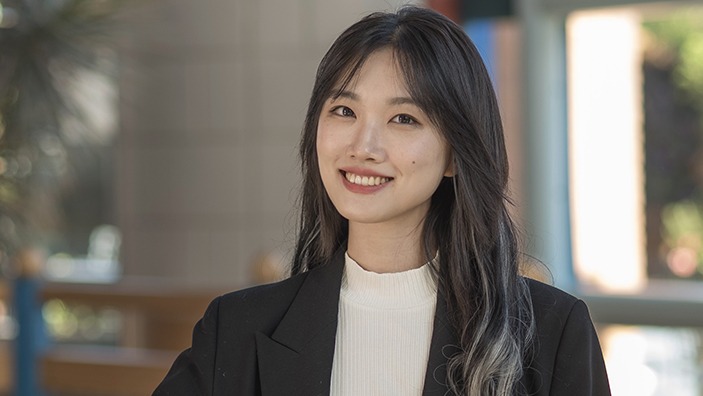
This term, we have had the opportunity to attend presentations by Dr Zahid Mouneer, Senior Managing Director of Investment Banking at BNP Paribas, Amelia Armour, Partner at Amadeus Capital, Dr Frederic Samama, Head of Strategic Development for Sustainable Finance at S&P Global, Chris Eagle, Chief Executive Officer at Aquila Markets, Juan Manuel Tellez, Vice President in Algorithmic and Automation Risk Department at BMO Financial Group, Shaan Raithatha, Senior Economist and Strategist at Vanguard, and Golnaz Borghei, Lead Corporate Venture Capital at PwC.
Aligned with my interests in sustainable finance, I applied for the dinner with Dr Samama. Last summer, while attending a programme at Harvard Business School, I came across his paper ‘Hedging Climate Risk’ and was intrigued by his insights. At the time, I never expected that a year later, I would have the chance to meet the author, share a dinner table, and discuss his research first-hand. The unexpected coincidence made the experience more memorable for me.
Career advice and industry insights
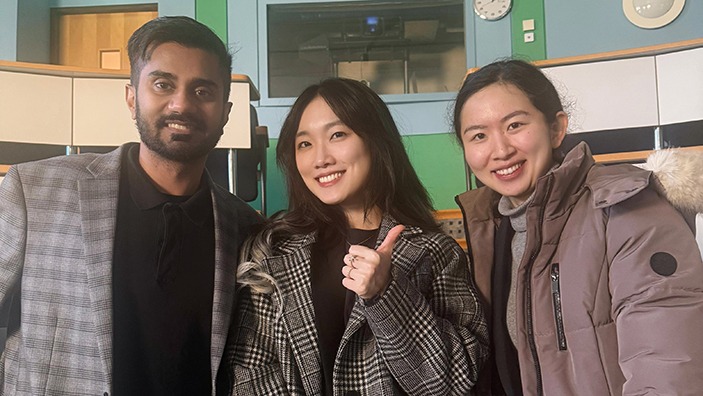
Among all the speakers, Mr Paul Tucker left a particularly strong impression on me. As a former partner and member of the Management Committee at Egerton, a leading hedge fund, his career path stood out for its breadth and depth. Before joining Egerton, he worked at EY for 2 years, spent a year at Lehman Brothers Global Asset Management, and later moved to Merrill Lynch.
In his presentation, Mr Tucker not only shared valuable investment insights but also offered career advice that resonated deeply with me.
Some of the key lessons I took away from his talk include:
- there is no single correct path to success – people reach their destinations at different times and through different routes – it’s important to have empathy and appreciation for non-traditional career journeys
- be willing to take calculated risks, especially early in your career – with fewer personal responsibilities at the start of your professional life, taking bold opportunities can be crucial for long-term growth
- develop a strong investment process built on curiosity, continuous learning, and conviction while maintaining the humility to recognise mistakes – success in investing is not about following consensus but about having the confidence to back your insights
- focus on businesses with pricing power, minimal disruptions, and durable models. Instead of looking solely at valuation, it’s essential to identify companies with sustainable advantages
His perspectives reinforced the importance of both strategic decision-making and adaptability in finance, making his session one of the most impactful experiences of the City Speaker Series for me.
My highlights of the Cambridge Master of Finance

Before joining the Cambridge MFin, I worked at China Merchants Bank Head Office, managing high-net-worth (HNW) clients, which involved wealth management and investment advisory. In addition to managing client portfolios, I led a team of junior managers, focusing on optimising financial strategies and enhancing client relationships.
What led me to apply for the Cambridge MFin was my aspiration to deepen my expertise in institutional finance and investment management, beyond the retail banking and wealth management sectors. Having observed China’s evolving financial landscape, particularly the shift towards sustainable finance, digital transformation, and global investment trends, I sought a programme that would provide a broader, international perspective. The MFin’s rigorous curriculum, exposure to top industry professionals, and strong emphasis on practical learning made it the perfect fit for advancing my career towards a more analytical and strategic role in finance.
Why I chose the Cambridge MFin
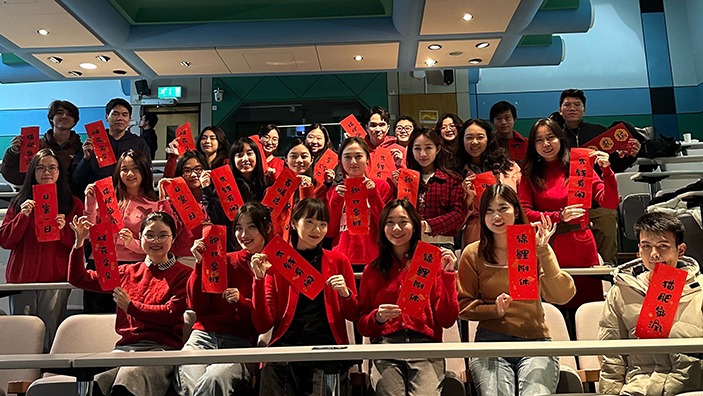
One of the biggest highlights of the Cambridge MFin has been the opportunity to engage with a cohort of experienced finance professionals. Coming from diverse backgrounds, my classmates bring unique insights and industry knowledge, making every discussion an opportunity to learn, reflect, and refine my career goals. These interactions have not only expanded my perspective on finance but also challenged me to think more strategically about my future.
Besides the networking and peer learning, the programme’s focus on financial innovation has been particularly exciting. Through lectures and industry talks, I’ve gained exposure to AI, blockchain, and machine learning applications in finance, helping me better understand how these technologies are reshaping the industry.
Another highlight has been my selection for the Morgan Stanley Group Consulting Project during the upcoming spring break – a truly thrilling opportunity! This marks my first experience working on a consulting project, and I am eager to develop my research and analytical skills through real-world problem-solving. The chance to connect with industry professionals and apply classroom knowledge to practical challenges makes this an invaluable learning experience.
College life in Cambridge
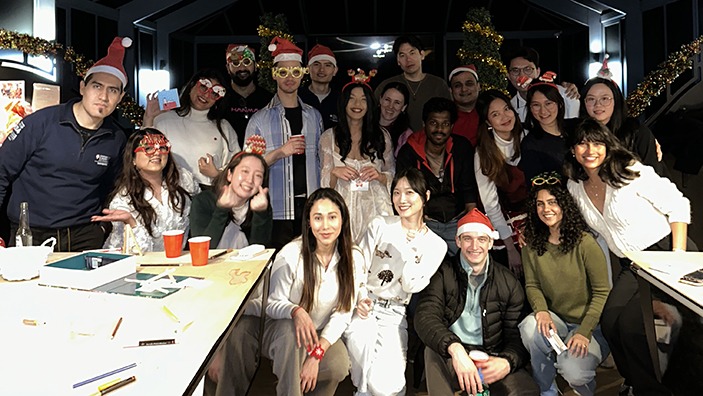
Being a member of Hughes Hall has also been one of the highlights of my Cambridge experience. The College’s open and inclusive environment, enriched by a diverse community, creates a welcoming atmosphere where connections flourish. With many MFin and MBA students, Hughes Hall provides great opportunities to engage with fellow Cambridge Judge Business School cohorts and exchange insights with like-minded professionals.
Beyond college, student life in Cambridge is incredibly dynamic, from attending formal dinners at different colleges to exploring the city’s historic charm. One of the most enjoyable aspects of college life for me is weekend brunch with friends – after all, who can resist a relaxed morning bonding over a classic English breakfast!
About the blog author

Ruiyan holds a dual Bachelor’s degree in Finance and a Master’s degree in Management from UCL. She has 6 years of experience in wealth management as an HNWI wealth manager at China Merchants Bank Head Office, where she led a team of 5 juniors.
Driven by her passion for AI applications in finance and impact investing, she joined the Cambridge MFin programme to build a future career in financial innovation and sustainable finance. Committed to continuous learning, she also earned a Certification in Sustainable Investing from the CFA Institute.
Beyond finance, Ruiyan embraces life as an adventurer and volunteer. She uses her time to teach in rural areas, participate in international volunteer work, and serve as a juror. Always open to unconventional experiences, she believes in breaking routines and embracing new challenges to broaden her perspective.
Master of Finance
Engage with the world’s best financial minds and skilled professionals. Open doors to exciting new career possibilities with a Cambridge Master of Finance (MFin).
Related articles
Student and alumni news
Cambridge MFin life: mind, muscle and markets
Sharu Iyer (MFin 2024) shares a typical day on the Cambridge Master of Finance degree programme.
Student and alumni news
Books, boats and business: my journey to Cambridge Judge Business School
As Michaelmas term draws to a close, Master of Finance student Sayam Sanjib Deb looks back on his first few weeks at Cambridge.
Student and alumni news
My first term on the Cambridge Master of Finance
MFin student Justin Hyunjin Kim shares some of the highlights from his first few weeks on the Cambridge Master of Finance degree programme.
The post Lessons from leaders: insights from the City Speaker Series appeared first on Cambridge Judge Business School.
AI is changing innovation – here’s how 2 Apr 2025, 7:45 am
AI is reshaping our everyday experiences – often without you realising it. From personalised apps and smarter healthcare to greener tech and global access, AI is no longer just for tech specialists. It’s driving the innovation that’s changing how we live, work and interact with the world.
Cambridge Judge Business School faculty and lecturers are studying how AI is impacting innovation across industries: “Cambridge Judge has long prided itself on research with real-world application, and our AI research shows how companies can responsibly innovate smarter, quicker and at lower cost, as well as become more international,” says Paul Tracey, Vice-Dean for Research and Professor of Innovation and Organisation at the Business School.
1
Smarter personalisation: AI and the power of behavioural insights
AI has boosted capabilities in personalisation by moving beyond traditional segmentation and instead learning directly from real-time user behaviour. Rather than relying on broad demographic categories, AI enables companies to tailor experiences at an individual level, offering customers highly personalised products and services.
Popular digital platform TikTok is a powerful example of AI-powered personalisation, and was a case study in a recent article co-authored by Peter Williamson, Honorary Professor of International Management at Cambridge Judge.
Unlike traditional recommendation engines that use search history or demographics, TikTok’s AI-driven algorithm analyses user engagement patterns in real time (such as how long users watch a video, what they skip and their overall interactions) to continuously refine recommendations presented on the platform’s ‘For You’ page. This approach allows TikTok to recommend content more accurately than traditional models and has played a key role in its rapid global success.
“We show how firms can create digital interactions from which information about individuals’ revealed preferences can be imputed,” says the research by Peter. AI can “enable born-digital firms, and potentially other businesses where digitalisation can play a role, to build new kinds of competitive advantages based on data network effects”.
We show how firms can create digital interactions from which information about individuals’ revealed preferences can be imputed.
2
Personalisation in finance: Visa & Crayon Data
AI’s personalisation capabilities are also having a massive impact on the finance industry. AI’s ability to analyse transaction histories and predict user preferences is shifting finance from a one-size-fits-all model to a highly personalised experience.
Alejandro Reynoso, external lecturer on the Cambridge Master of Finance programme and former Research Fellow at Cambridge Judge, highlights Visa’s recent partnership with Crayon Data, which introduced AI-driven insights that allowed credit card issuers to tailor financial products based on consumer behaviour.
This sort of precision improves customer engagement, reduces churn and enhances financial decision-making. “By integrating human interaction platforms with these potent robots, both retail and institutional clients can gain access to unprecedented speed, precision and sophistication – a realm once limited to only a select few industry leaders,” says Alejandro.
More broadly, AI is transforming cost efficiency in various industries by automating tasks, optimising resource use and cutting down on operational costs. In the finance sector, for example, AI-driven automation is taking over many tasks like trading, risk assessment and fraud detection, which means fewer humans are needed – therefore leading to significant savings.
“Machine learning algorithms can swiftly analyse massive datasets to pinpoint potential risks,” Alejandro says, and this enables “proactive mitigation strategies and more informed decision-making.”
By integrating human interaction platforms with these potent robots, both retail and institutional clients can gain access to unprecedented speed, precision and sophistication – a realm once limited to only a select few industry leaders,
3
AI in healthcare: precision medicine, digital therapeutics and solutions for rural populations
In healthcare too, the effects on AI personalisation is massive. Providers are now able to analyse real-time patient data to create dynamic, responsive and individualised care plans, with AI-driven digital therapeutics already improving outcomes for conditions like diabetes and obesity, helping patients manage their health more effectively while reducing unnecessary hospital visits and lowering medical costs.
“Precision medicine, a data-driven approach, tailors treatments to individual genetic profiles, medical histories and lifestyles…it is reshaping healthcare by focusing on personalised data to create customised treatment plans,” says research co-authored by Vincent Mak, Professor of Marketing and Decision Sciences at Cambridge Judge, which explored how AI and digital health technologies can enhance healthcare efficiency, improve patient outcomes and reduce healthcare costs. A report on this research was published by the UK Parliament’s Food, Diet & Obesity Committee.
Globally, AI approaches have shown impressive cost-effectiveness in managing such chronic conditions. A study on digital health therapeutics in Japan found that AI health interventions could save the country around $159 million a year while also improving health outcomes.
In India, AI now holds out the promise of highly affordable solutions for low-income citizens and consumers in rural areas regarding access to healthcare. Jaideep Prabhu, Vice-Dean for Faculty and Professor of Marketing at Cambridge Judge, cites the Bangalore-based company Sarvam AI, whose work allows rural patients to have phone access in their own language to their personal physician.
“AI is a wonderful tool if applied in a way that recognises the importance of working within environmental and social structures, and this can empower local communities while boosting inclusive growth that benefits large swathes of the population,” says Jaideep.
AI is a wonderful tool if applied in a way that recognises the importance of working within environmental and social structures, and this can empower local communities while boosting inclusive growth that benefits large swathes of the population.
4
AI innovation is challenging traditional globalisation strategies
The ability for AI-powered tools to gather customer and market data is impacting how companies internationalise. In the past, businesses have relied on costly foreign direct investment (FDI) to learn about local markets, but Peter Williamson’s research on Tik Tok instead identifies a proprietary AI model as a new way to provide a “new, country-agnostic way to enter foreign markets and adapt to differences among consumers”.
“The use of rapidly evolving AI technologies may enable some types of firms to move from a model of internationalisation one country at a time to global expansion one person at a time,” Peter says, citing the study of how TikTok expanded rapidly around the world from its base in China.
The implications of this internationalisation-at-a-distance strategy are extensive. “The new approaches to internationalisation made possible by AI suggests the need to re-think important elements of accepted international business theory,” says the study.
5
AI is driving sustainability
AI is transforming the way businesses approach their sustainability efforts by making energy consumption more efficient, helping in waste management and enhancing decision-making.
A report led by the Cambridge Centre for Alternative Finance (CCAF) at Cambridge Judge dives into the Bitcoin mining sector, where companies are increasingly leveraging existing power contracts and data centre infrastructure to capitalise on the skyrocketing demand for servicing AI workloads. The report titled ‘Cambridge Digital Mining Industry Report 2025’ is co-authored by Alexander Neumueller, Research Associate at the Cambridge Centre for Alternative Finance (CCAF), colleagues from CCAF, and Kamiar Mohaddes, Associate Professor in Economics and Policy at Cambridge Judge.
This increased demand for computing power, however, is spurring innovation elsewhere, with one case study from the report highlighting US-based Crusoe Energy, which addresses natural gas flaring, a major source of greenhouse gas emissions. Crusoe’s technology captures this otherwise-wasted gas to generate electricity on site, a process expected to reduce potent methane pollution more effectively than flaring, which then powers modular data centres that deliver high-performance computing crucial for AI training,
AI is also impacting sustainability efforts in healthcare. Digital health tools are helping to minimise hospital visits and cut down on emissions from unnecessary treatments. A 2023 analysis by PwC indicates that the adoption of artificial intelligence (AI) could reduce global greenhouse gas emissions by 4% and increase global GDP by 4.4% by 2030.
“Thanks to both technological advancement and its more enabling environment, we are entering the next generation of healthcare, which will make our health systems and society more sustainable,” says Vincent Mak.
Thanks to both technological advancement and its more enabling environment, we are entering the next generation of healthcare, which will make our health systems and society more sustainable.
Using AI in innovation: is bigger better?
AI is transforming business and driving innovation, but do firms need a huge budget to deploy AI effectively? AI is often associated with innovation that is high cost and resource intensive, as evidenced by multi-billion-dollar generative AI investment by companies ranging from Facebook parent Meta to business-solutions firm IBM.
The rapid rise of Chinese AI company DeepSeek suggests the Silicon Valley bigger-is-better model is not the only way, says Jaideep Prabhu, an expert on frugal innovation who has written 2 books on the subject.
“DeepSeek has developed its AI model at a fraction of the cost and time that US tech giants such as Meta and OpenAI, initially because DeepSeek couldn’t access powerful Nvidia chips, because of a US government policy,” says Jaideep. “This hurdle forced them to come up with new ways.”
Adds Eden Yin, Associate Professor of Marketing at Cambridge Judge, who together with Peter Williamson developed a concept they call accelerated innovation: “DeepSeek demonstrates that Chinese firms can often accelerate the development process in a way their western competitors can’t match.”
This accelerated innovation concept reflects the principles of jugaad (or frugal) innovation: ‘Jugaad’, a Hindi term, refers to improvised solutions born from ingenuity and adaptability.
“There are 6 core principles of jugaad innovation: seek opportunity in adversity, do more with less, think and act flexibly, keep it simple, include the margin, and follow your heart,” explains Eden. “Firms from other emerging markets, such as Brazil, Russia, Mexico and Argentina, have adopted similar approaches to innovation. High-profile examples include Brazil’s Embraer in regional jets, Russia’s Gazprom in energy, Mexico’s Cemex in cement and Argentina’s Tenaris in seamless tubes.”
This mindset to innovation, and deploying AI to drive it, is crucial as it will allow AI and other technologies to be more inclusive, scalable and accessible to emerging markets, ultimately driving greater global innovation.
DeepSeek demonstrates that Chinese firms can often accelerate the development process in a way their western competitors can’t match.
Challenges that must be overcome to maximise AI’s benefits
While we’re now grasping the potential impact of AI on business and society, there are several challenges to face in order to make AI a more beneficial tool.
Artificial intelligence is here to stay
Like the telephone, the personal computer and the Internet before it, AI is here to stay and will increasingly be a taken-for-granted part of everyday life rather than a phenomenon in itself.
The technology will transform industries, creating new jobs while making other roles obsolete. As examples from finance, healthcare, cryptocurrencies and popular culture already show, AI is changing the very nature of how companies and other organisations approach the innovation journey. It will be a breathtaking ride.
Featured research
Dos Santos, J. F. P., and Williamson, P. J. (2024) “Beyond connectivity: Artificial intelligence and the internationalisation of digital firms” Information and Organization
Mak, V., and Takasaki, Y. (2024) “Digital health and therapeutics (DH/DTx) for behaviour change: An introduction for policy makers” UK Parliament Committee
Related articles
If you’re thinking of engaging with a business school for learning or research, you’ll want to be sure it’s embracing the technologies of the future. Right now, that means AI. But where should AI show up in the classroom? How should it be used in research? And what should a truly forward-thinking vision for AI in business education look like?
We should get used to the fact that our workplaces and interactions with government will change dramatically with the emergence of AI – but should we be concerned? Job losses, privacy infringements and rights erosion are growing themes in the media, but in this article we look beneath the hype and use the latest research from Cambridge Judge to explore the growing influence of AI and what the means for the future of human agency, potential and inclusion.
Companies and other organisations are rapidly adopting artificial intelligence to drive strategy and planning. But there’s a key question: does AI actually make better decisions than humans? Academics art Cambridge Judge Business School are using recent research to help answer this question.
The post AI is changing innovation – here’s how appeared first on Cambridge Judge Business School.
Human brain vs AI: what makes better decisions? 2 Apr 2025, 7:44 am
The world is rapidly tapping artificial Intelligence (AI) to transform decision-making in business, government, finance, healthcare and beyond. The technology’s analytical power is unparalleled, but a more difficult question is this: does AI actually make better decisions than humans?
It’s not an easy query to answer. Research by faculty and other academics at Cambridge Judge Business School outlined in this article sheds new light on where AI outperforms human decision-making, where it fails and what business leaders must do to integrate AI most effectively.
While AI excels in data-driven optimisation, risk assessment and operational efficiency, it struggles when dealing with ethics, strategic foresight and unpredictability. And then there is another human element to consider: while some people may give too much credence to AI, others (and particularly older people) distrust or are otherwise averse to AI – and that cannot simply be ignored in setting organisational policy.
“There are profound policy questions surrounding AI, human decision-making and the future of work that Cambridge Judge researchers are grappling with,” says Michael Barrett, Vice-Dean for Strategy and University Engagement and Professor of Information Systems and Innovation Studies at the Business School. “Firm answers may be scarce at this point in time, but we are being responsible in asking the tough questions and engaging with regulators, consumers and companies.”
There are profound policy questions surrounding AI, human decision-making and the future of work that Cambridge Judge researchers are grappling with.
Where AI has a clear advantage: data analysis and modelling
When it comes to predictive modelling and data analysis, AI has a clear advantage as shown in a recent business simulation study by 3 Cambridge Judge academics on the automobile industry. The study found that AI when provided timely data in terms of variety, veracity and volume was faster at designing high-performing products, optimising costs and supply chains, and responding to market fluctuations in real time.
“Ignoring generative AI in corporate strategy is no longer viable,” say the co-authors – Fellow Hamza Mudassir, Kamal Munir, Professor of Strategy and Policy, and Pro-Vice-Chancellor (University Community and Engagement), and Shahzad (Shaz) Ansari, Professor of Strategy and Innovation.
“This experiment demonstrates that even untuned models can offer unique and creative approaches to strategy when properly prompted, generating strong results. If generative AI can help companies maximise shareholder value more effectively, why resist? After all, maximising shareholder value is the raison d’être for the role of the CEO,” they wrote in a Harvard Business Review article.
These findings align with a pilot study co-authored by Lucia Reisch, Director of the El-Erian Institute of Behavioural Economics and Policy at Cambridge Judge Business School. The study demonstrated that large language models (LLMs) can very accurately predict the effects of food-related policy interventions – such as estimating whether a policy to reduce food waste will have a positive effect, and how large that effect might be. While the study did not directly compare AI performance with that of human experts, the results indicate a high degree of predictive accuracy in this domain.
“Formulas tend to do better than people do, and algorithms often outperform human beings, including experts,” says Lucia. “One reason is that algorithms may exhibit a lower degree of inconsistency or ‘noise.’ Another is that they can, in principle, be free from cognitive biases—provided they are trained on unbiased data.” However, Lucia adds that this is, in fact, a significant challenge: “Algorithms essentially learn from the data they’re trained on. So if that data contains biases, the algorithm is likely to pick those up and reproduce them.”
Formulas tend to do better than people do, and algorithms often outperform human beings, including experts. One reason is that algorithms may exhibit a lower degree of inconsistency.
Can AI decisions surpass human judgment across industries
As companies increasingly adopt artificial intelligence to drive strategy and planning, the debate over whether AI truly makes better decisions than humans remains central. While the human brain excels in contextual understanding and emotional intelligence, AI offers unparalleled speed and precision in processing vast amounts of data.
For instance, AI-powered diagnostic tools in healthcare outperform traditional methods by detecting cancer earlier and more accurately, demonstrating how AI can drive data-driven decisions. In finance, AI-driven trading models execute billions of trades per second, surpassing human analysts in sheer efficiency.
Meanwhile, corporate strategy benefits from AI-enabled digital twins, digital models that mirror real-world changes to simulate market scenarios. According to Virginia Leavell, Assistant Professor in Organizational Theory and Information Systems, “This is what makes digital twins useful.” However, as research from Cambridge Judge Business School shows, the effectiveness of AI versus human decision-making ultimately hinges on the context in which decisions are made.
But Leavell’s research suggests that the impact of digital twins goes even further than strategic simulation – they can actually help shape reality. When people start to trust the model and act on its predictions without questioning it, the model becomes more than just a tool – it starts to shape real-world decisions. “For a digital twin to become performative, it must first be taken-for-granted as ‘real’,” she explains.
This shows that when people really trust AI models like digital twins, the model can start to shape decisions on its own – sometimes even more than the people using it. But it’s still up to humans to decide when to follow the model and when to step back and think for themselves.
Uncertainty and ambiguity: where AI falls behind
Despite such strengths, AI often takes second place to humans when dealing with uncertainty, ambiguity, or human-driven complexity.
The auto industry study, cited above, found that AI-driven CEOs failed when market conditions changed unexpectedly. Unlike human executives, who build in strategic flexibility, AI models are usually optimised for short-term growth and profitability but struggle with unforeseen disruption. That’s because AI relies on historical data rather than intuition, and tends to focus on things that worked in the past rather than on new techniques that might work better in the future.
“AI can rapidly learn and iterate in a controlled environment, making it less ideal for coping with highly disruptive events that require human intuition and foresight,” wrote Hamza, Kamal and Shaz.
AI can rapidly learn and iterate in a controlled environment, making it less ideal for coping with highly disruptive events that require human intuition and foresight.
Can AI be as creative as humans?
Conventional wisdom has long held that while AI may be terrific at number crunching and other data analysis, the human brain is far superior when it comes to creative tasks. Yet research at Cambridge Judge questions such assumptions – up to a point.
A 2024 study co-authored by Yeun Joon Kim, Associate Professor in Organisational Behaviour, found that while human-AI co-created ideas were initially innovative, creativity later stagnated because human-AI creativity failed to refine and develop initial outputs over time. In 10 rounds of tasks, human-only teams continued to improve creatively while human-AI teams plateaued.
The research introduces a theory of augmented learning regarding human-AI co-creation in order to enhance joint creativity. “We propose shifting the focus of augmented learning from traditional human cognitive learning to a collective learning process, where humans and AI collaboratively rearrange their levels of involvement in co-creation activities to continuously improve joint creativity over time,” the study says. “Augmented learning is an evolutionary process in which humans and AI continuously adjust their levels of involvement in multiple activities within a task over time to achieve ongoing performance enhancement.”
Another 2024 study by David Stillwell, Professor of Computational Social Science, found that large language models (LLMs) can match human performance in structured problem-solving but underperform in creative writing, storytelling and tasks requiring emotional depth. AI lacks diversity in responses, often producing repetitive, predictable outputs that fail to challenge conventional thinking. Thus, AI-generated advertising slogans were technically sound they lacked emotional resonance, while human-created slogans were more persuasive.
“When questioned 10 times, an LLM’s collective creativity is equivalent to 8-10 humans. When more responses are requested, 2 additional LLM responses equal one extra human. Ultimately, LLMs, when optimally applied, may compete with a small group of humans in the future of work,” David’s research concludes.
This poses an intriguing question: If AI can think like 8 or 10 people, should we treat its decisions like a team decision – with all the various elements that entails – rather than the decision of a single piece of technology? If so, where does human intuition fit in?
A key takeaway from both studies is that AI should be used for accelerating idea generation, but humans must refine and contextualise AI-generated insights.
Algorithm aversion: why humans still trust people over AI
A follow-up study by Lucia Reisch and Micha Kaiser at the El-Erian Institute at Cambridge Judge to the earlier AI pilot study examined algorithm aversion. The study looked at 10 different decision scenarios (including workplace promotion and layoffs, health-related choices and the selection of a family vacation destination) and participants from 6 countries (Germany, Japan, Mexico, Sweden, the US and the UK).
The vacation scenario, for example, asked participants: “Imagine that you are planning a vacation for yourself and your family. You are not sure what would be best. Would you prefer a recommendation based on:
a. An algorithm (based on data on thousands of people and which vacations they enjoy, as well as relevant data about you and your family)
b. A travel agent (based on his 30 years of experience in the business)?”
The research found that “majorities generally favour human decision-makers over algorithmic decision-makers in diverse nations and across diverse problems”. While even brief additional information about how and why algorithms work can reduce such algorithm aversion, such aversion is robust among a certain percentage of the population, particularly older people, so such information is unlikely to have much effect among them.
“The findings suggest that informational interventions alone have a relatively modest effect on algorithm acceptance,” the study says, while acknowledging that this could change over time as people gain additional exposure to algorithms.
Brains or algorithms: which make better decisions?
So, back to our initial question: does AI make better decisions than humans?
Yes – when it comes to data-driven, logic-based decisions, where AI is unmatched in speed, accuracy and pattern recognition. No – when it comes to intuition, ethical judgment, adaptability and strategic foresight.
Perhaps the better question is this: how can humans best use AI in order to arrive at the best decisions? Companies that enhance human intelligence by tapping AI for insight and efficiency while retaining human judgment, oversight and ethical responsibility, will gain a sustainable competitive advantage.
Tips on integrating AI decision making into your daily life
1
Leverage AI for data-driven tasks
If you have a task or project hat requires handling lots of data, perhaps looking for trends or making logic-based decisions, then you can be confident that with the right prompts AI can out-perform humans in outcome and efficiency.
2
Rely on your judgement in ethical or emotional contexts
Don’t rely on AI to make decisions in these types of scenarios – it can assist you with compiling data to support you, but use your own judgement here.
3
Keep oversight of AI outputs
Whenever you’re using AI, check the outcomes carefully. Hallucinations can creep in easily, and also any mistakes in data input can impact outcomes, so be careful and check.
4
Use AI as a creative assistant
Use AI to suggest initial ideas, but then it’s best to use your own (or your team’s) judgment to refine and evolve them.
5
Be transparent in your use of AI
Make sure you state if and how AI has helped you with tasks or projects.
6
Stay informed, but don’t over-rely
Be aware of how quickly the AI landscape is evolving and its capabilities expanding, and communicate with others to stay up to date and try new skills. But beware of over-reliance, and remember that individuals are on this journey at their own pace and within their own context.
Featured research
Mudassir, H., Munir, K., Ansari, S., and Zahra, A. (2024) “AI can (mostly) outperform human CEOs” Harvard Business Review
Sunstein, C. R., and Reisch, L. A. (2025) “In praise of computation” Environmental and Resource Economics
Leonardi, P. M., and Leavell, V. (2024) “How the map becomes the territory: prediction, performativity and the process of taking digital twins for granted” Journal of Organization Design
Sun, L., Yuan, Y., Yao, Y., Li, Y., Zhang, H., Xie, X., Wang, X., Luo, F., and Stillwell, D. (2024) “Large Language Models show both individual and collective creativity comparable to humans” arXiv
Kaiser, M., Sunstein, C. R., and Reisch, L. A. (2025) “On preferring people to algorithms” Information and Organization
Luan, Y., Kim, Y., and Zhou, J. (2024) “AI’s creative promise: for better or for worse?” Academy of Management
Related articles
If you’re thinking of engaging with a business school for learning or research, you’ll want to be sure it’s embracing the technologies of the future. Right now, that means AI. But where should AI show up in the classroom? How should it be used in research? And what should a truly forward-thinking vision for AI in business education look like?
We should get used to the fact that our workplaces and interactions with government will change dramatically with the emergence of AI – but should we be concerned? Job losses, privacy infringements and rights erosion are growing themes in the media, but in this article we look beneath the hype and use the latest research from Cambridge Judge to explore the growing influence of AI and what the means for the future of human agency, potential and inclusion.
Artificial Intelligence (AI) has evolved beyond being just a tool for efficiency. It’s now a game-changer in how businesses approach innovation.
The post Human brain vs AI: what makes better decisions? appeared first on Cambridge Judge Business School.
Distributed public economics and decentralised public finance via network optimisation 31 Mar 2025, 8:39 am
By Ioannis Papastaikoudis, CERF and CCFin Associate, Cambridge Judge Business School, University of Cambridge
This work addresses the optimisation problem in decentralised public finance, focusing on allocating public goods and services across multiple regions. It models the interaction of inter-regional and intra-regional public infrastructure from a network perspective, framing it as a multi-objective optimisation problem solved using distributed optimisation techniques. The study aims to provide policymakers with a practical framework for efficient resource allocation to maximise regional welfare.
Decentralised optimisation in economics
Optimisation plays a central role in economics, with its foundational applications established in seminal works such as (Arrow, [1]). In classical economic theory, the Utility Maximisation Problem (UMP) often assumes that an agent’s utility is represented by a single objective function with the respective decision variables under consideration to lie on a specific domain (Mas-Colell et al., [2]).
However, in reality, an agent’s utility is shaped by multiple factors, each potentially governed by different functions with distinct domains whose structure is suitable to describe the characteristics of the various factors, where the total objective function is the sum of the individual factor functions. For instance, a city’s utility may depend on both its residents’ access to affordable housing and the quality of its public transportation system, each described by separate functions. Similarly, a firm’s utility may be influenced by both production output and employee satisfaction, with each factor modelled by distinct functions.
Additionally, a household’s utility could depend on both energy consumption and environmental sustainability measures, each described by different functions. This introduces a form of decentralisation within the objective function based on the different factors that provide the total utility. These different facto functions frequently share common decision variables in their domains, referred to as coupling variables, which create network effects across the different factor functions.
Public economics and fiscal decentralisation
In the field of public economics, the focus is on the role of government policy in ensuring economic efficiency and equity. The goal is to improve social welfare through the application of microeconomic tools. Public finance, a subfield of public economics, examines government expenditure and tax policy, alongside their broader impacts on the economy. In this study, the focus is on government expenditure, where fixed budgets are allocated to municipalities by the central government. Policymakers, such as mayors or governors, are responsible for addressing the public needs of their respective regions in terms of goods and services. This problem can be framed within the context of decentralised public finance, where multiple policymakers work to optimally distribute budgets to achieve economic goals, such as providing public goods and services. The
theory also extends to the case of cooperative policymaking, where neighbouring regions collaborate to address common objectives.
This framework could further be applied to higher levels of coordination, such as inter-state or international cooperation, as exemplified by entities like the European Union. Fiscal decentralisation refers to the process by which central governments empower subnational authorities to provide services and goods to their populations (Bahl et al., [3]). The 3 primary fiscal functions – stabilisation, redistribution, and resource allocation—are generally divided between the central government and subnational levels (Oates, [4]).
While stabilisation and redistribution remain under the purview of central governments, resource allocation is where fiscal decentralisation can play a significant role. Proponents argue that local policymakers possess a better understanding of their constituents’ preferences and can, therefore, allocate resources more efficiently to meet local needs. However, fiscal decentralisation also has potential drawbacks, such as inefficiencies in service provision and unequal distribution of resources (Fedelino et al., [5]).
In our model, we consider policymakers as social planners who aim to maximise the welfare of their constituents, making decisions regarding public goods and services that benefit the population. These goods may be either intraregional (specific to one region) or inter-regional (benefiting multiple regions). Examples of intra-regional public goods include flood prevention systems or healthcare units, while inter-regional goods may consist of large transportation infrastructure, such as highways or rail systems.
By utilising the decentralised optimisation setting presented earlier, we recognise that various factors – such as healthcare, transportation, and education – affect regional welfare. Since some of these factors may be shared across regions, network effects are created, linking the welfare of these regions.
Distributed Utility Maximisation Problem (UMP)
To capture the full objective function of a policymaker, we treat inter-regional public infrastructure as coupling variables, shared decision variables that appear in the utility functions of multiple regions. In contrast, intra-regional public infrastructure is treated as local decision variables, decision variables specific to each region.
The welfare maximisation problem is thus framed as a utility maximisation problem, where the objective is to determine the optimal allocation of public goods across different regions. The interactions between the different regions via inter-regional public goods create a multi-agent, multi-objective optimisation problem that can be efficiently solved using distributed optimisation techniques and thus we are able to calculate the Marshallian demand for the Utility Maximisation Problem (UMP) for both coupling and local variables, determining how to optimally allocate both types of public goods across regions to maximise welfare.
Our approach provides useful insights for policymakers and inter-regional coordination committees responsible for managing territorial development funds. This represents a significant step forward in solving multi-party optimisation problems in public finance, which were once considered intractable (Samuelson, [6]).
Alignment with standard economic theory
Our model aligns with standard economic theory, where input vectors (decision variables) under a given mechanism (utility function) lead to specific utility levels. The mechanism is separable, allowing the total utility to be expressed as the sum of individual utility functions with coupling among their input variables.
This framework builds upon traditional utility theory and extends it to a decentralised, multi-objective setting. This methodology may also be applicable to other static optimisation problems, such as profit maximisation in the private sector.
Featured academic
Ioannis Papastaikoudis
CERF and CCFin Associate, Cambridge Judge Business School, University of Cambridge
Featured research
Arrow, K.J. (1958) Studies in the mathematical theory of economic behavior. Stanford University Press.
Mas-Colell, A., Whinston, M.D. and Green, J.R. (1995) Microeconomic theory. Oxford University Press.
Bahl, R.W., Linn, J.F. and Wetzel, D. (2018) “Fiscal decentralization and intergovernmental transfers in developing countries.” Public Finance Review, 46(5): 691-710
Oates, W.E. (1972) Fiscal federalism. Harper & Row.
Fedelino, A. and Nellis, J. (2010) Fiscal decentralization and public expenditure management in developing countries. International Monetary Fund.
Samuelson, P.A (1954) “The pure theory of public expenditure.” In: Public goods and market failures. Routledge, pp.29-33
Related articles
Research centre news
Mutual fund performance measurement
Jaffe Greenwald, CERF post-doctoral researcher, develops a new measure for an equity mutual fund’s return performance. Jaffe finds that one in 4 mutual funds outperform a random risk-matched portfolio. In addition, mutual funds with a history of outperforming tend to maintain their outperformance.
Research centre news
Financial decisions of professional partnerships
Explore the dynamics of the world of partnerships, highlighting their distinct features, tax structures, and the vital role they play in the business landscape, especially in professional fields.
Research centre news
Biodiversity startups: emerging forces in conservation
Explore the critical issue of biodiversity loss and its implications for human well-being, business operations, and economic prosperity in our comprehensive resource.
The post Distributed public economics and decentralised public finance via network optimisation appeared first on Cambridge Judge Business School.
